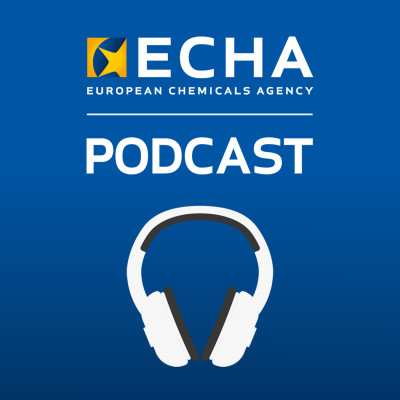Restricting PFAS in the EU: Next sectors to be evaluated by ECHA's committees
00:00 / 18:40
2,387
Chapters
#1
Introduction of the guests and topics of the podcast
00:53
#2
Why is the committee evaluating the restriction in batches?
01:53
#3
What discussion did the committee have about PFAS in metal products?
02:24
#4
What did the committee conclude on the hazards of PFAS?
03:25
#5
What kind of studies were involved in the process?
05:29
#6
What is the re-cap from the socio-economic side?
06:06
#7
What consumer mixtures were covered?
08:02
#8
What sectors will be discussed in upcoming meetings?
08:23
#9
How are stakeholders able to participate in the restriction process?
10:19
#10
Updates on the harmonised classification of talc.
11:59
#11
What did the committee conclude on talc?
13:13
#12
Will be there any changes in the amounts of talc used in products?
14:09
#13
What are occupational exposure levels what is the committee's role in them?
14:45
#14
Update on the occupational exposure limits for bisphenol A.
16:05
#15
Next committee meeting details and conclusions
18:15

Restricting PFAS in the EU: Next sectors to be evaluated by ECHA's committees
In this episode of the Safer Chemicals Podcast, host Adam Elwan is joined by Roberto Scazzola, the Chair of ECHA's Risk Assessment Committee and Maria Ottati who chairs the Socio-Economic Analysis Committee to discuss the ongoing efforts and challenges in regulating harmful chemicals.
The episode focuses on the universal PFAS restriction proposal, addressing its persistency and health impacts, and the committees' approach to evaluating different sectors in batches.
They also explore the initial discussions on harmonising the classification and labelling of talc, and the steps towards recommending occupational exposure limits for bisphenol A (BPA).
Tune in for the latest updates on the committees' work in protecting health and the environment, their socio-economic implications, and the vital role of stakeholder contributions in this complex process.
Useful links
More
June RAC and SEAC meeting highlights - ECHA news, 13 June 2024
Agenda of RAC’s meeting [PDF] [EN]
Agenda of SEAC’s meeting [PDF] [EN]
**************
Follow us on:
Disclaimer: Views expressed by interviewees do not necessarily represent the official position of the European Chemicals Agency. All content is up to date at the time of publication.
Hosted by Ausha. See ausha.co/privacy-policy for more information.
Powered by Ausha 🚀